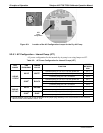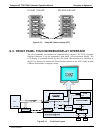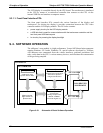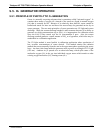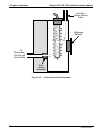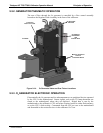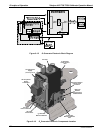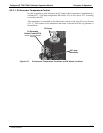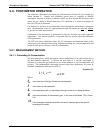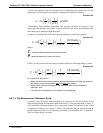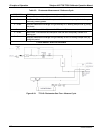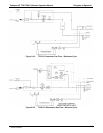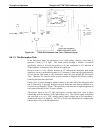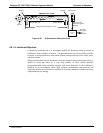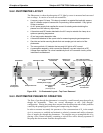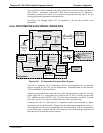
Principles of Operation Teledyne API T703/T703U Calibrator Operation Manual
210
9.6. PHOTOMETER OPERATION
The calibrator’s photometer determines the concentration of Ozone (O
3
) in a sample gas
drawn through it. Sample and calibration gasses must be supplied at ambient
atmospheric pressure in order to establish a stable gas flow through the absorption tube
where the gas’ ability to absorb ultraviolet (UV) radiation of a certain wavelength (in
this case 254 nm) is measured.
Gas bearing O
3
and zero air are alternately routed through the photometer’s absorption
tube. Measurements of the UV light passing through the sample gas with
and without
O
3
present are made and recorded.
Calibration of the photometer is performed in software and does not require physical
adjustments. Two internal variables, a slope and offset are used to adjust the calibration
of the photometer.
The CPU uses these calibration values, the UV absorption measurements made on the
sample gas in the absorption tube along with data regarding the current temperature and
pressure of the gas to calculate a final O
3
concentration.
9.6.1. MEASUREMENT METHOD
9.6.1.1. Calculating O
3
Concentration
The basic principle by which photometer works is called Beer’s Law (also referred to as
the Beer-Lambert equation). It defines the how light of a specific wavelength is
absorbed by a particular gas molecule over a certain distance at a given temperature and
pressure. The mathematical relationship between these three parameters for gasses at
Standard Temperature and Pressure (STP) is:
Equation 9-5
LC-
o
II
e
at STP
Where:
I
o
is the intensity of the light if there was no absorption.
I is the intensity with absorption.
L is the absorption path, or the distance the light travels as it is being absorbed.
C is the concentration of the absorbing gas. In the case of the Model T703, Ozone
(O
3
).
is the absorption coefficient that tells how well O
3
absorbs light at the specific
wavelength of interest.
07223C DCN6572



